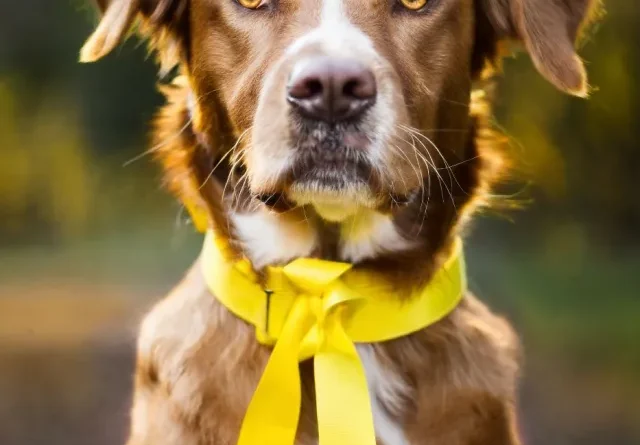What does a yellow ribbon on dog collar mean?
Have you observed dogs sporting a yellow ribbon on their collar or leash and wondered about its significance? Understanding the purpose behind this yellow ribbon is crucial to avoiding unwarranted interactions that could induce stress, fear, or even aggression.
- A Symbol of Caution
The yellow ribbon serves as a clear indicator that the dog requires some space. This universally recognized symbol is increasingly acknowledged worldwide. Various reasons may necessitate a dog’s need for space: - Reasons for Employing a Yellow Ribbon
- Dogs recuperating from surgery or illness may find interactions compromising their recovery.
- Dogs in training require concentration on their handler, warranting a cautious approach.
- Nervous or anxious dogs around strangers benefit from the yellow ribbon, preventing unnecessary stress.
- Aging dogs, less tolerant of interactions, or those with sensory deficits like blindness or deafness, find unexpected encounters frightening.
- Rescue dogs, having faced distressing backgrounds, may exhibit unpredictable behavior and wariness toward new encounters.
- Dogs with aggression issues pose a risk if they perceive an uninvited approach as a threat.
- The Yellow Dog Project
One influential movement advocating for the use of the yellow ribbon is the Yellow Dog Project. This global initiative is committed to educating the public and dog owners, promoting the identification and respect of dogs in need of space. Emphasizing responsible dog ownership, it underscores the importance of this simple communication tool in averting misunderstandings and potential accidents. - Approaching a Dog with a Yellow Ribbon
If you encounter a dog with a yellow ribbon or any yellow indicator on its collar or leash, exercise respect by maintaining a suitable distance. If accompanied by a dog, keep your pet leashed and refrain from allowing them to approach. It is courteous to acknowledge the owner from a distance and, if necessary, inquire about a safe passage. Never presume it is acceptable to approach or touch a dog without explicit permission from its owner.

